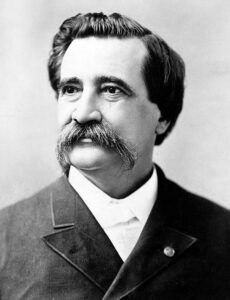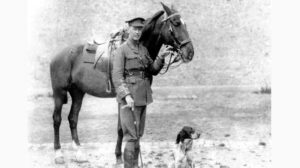The American Flag should be flown at half-staff on Monday, May 26, Memorial Day, to commemorate the men and women who have died while in the military service.
Lowering the flag is a visible sign of mourning and remembrance of the American military. At noon, the flag on May 26 should then be raised to full staff until sunset as a sign of the nation’s resolve to continue fighting for liberty and to keep alive the memory of whose who died in service.
Memorial Day had its beginnings as Decoration Day, 1868, when General John A. Logan, leader of an organization of Northern Civil War soldiers, called for a nationwide day of remembrance for all those who lost their lives in the Civil War.
He selected May 30th for the purpose, since it was not the anniversary of any particular battle fought during that war between the states. The war had ended in the spring of 1865 and has gone down in history as the war that has claimed more lives than any other conflict in United States history. It was also the war that required the establishment of the nation’s first national cemeteries.
Many towns and cities in both the North and the South had set aside days to pay tributes in the spring of each year to remember all those killed in the Civil War. Many people met in cemeteries, decorating graves with flowers, reciting prayers, and remembering the military men killed in battle or from illness as a result of battles.
But General Logan wanted a tribute from the united nation and set aside May 30 as a time to continue such honors throughout the country. He called it Decoration Day because of the many people who decorated graves each spring in recognition of those killed. General Logan called for remembrances of the military dead whose bodies he said, “now lie in almost every city, village and hamlet churchyard in the land.”
On the first Decoration Day, it was General James Garfield, later President Garfield, who made a speech at Arlington National Cemetery; the cemetery had been established in Virginia Jun 15, 1864, and where now 20,000 Civil War soldiers are buried. More than 5,000 people turned out to decorate the graves that day, while many smaller cemeteries observed similar honors. By 1890, each of the norther states had made Decoration Day an official state holiday, while southern states continued to honor the dead on various days during the year.
The federal government declared Waterloo, New York as the official birthplace of Memorial Day, since it hosted an annual community wide event on May 5, 1866 when businesses closed and residents decorated graves of fallen soldiers.
After the United State entered World War I half a century after the end of the Civil War, the Decoration Day observance evolved into a day to honor those who died in all wars and became known as Memorial Day. It officially became the name of the holiday to honor the fallen from all wars in 1967.
Today, in addition to visiting graves and placing flowers and American flags on soldiers’ and sailors’ graves, many communities hold parades and memorials for the fallen. Many wear a red poppy in remembrance of those fallen in war, a tradition that began with a World War I poem.
In Flanders Fields
In Flanders fields, the poppies blow
Between the crosses, row on row,
That mark our place; and in the sky
The larks, still bravely singing, fly
Scarce heard amid the guns below.
We are the Dead. Short days ago
We lived, felt dawn, saw sunset glow,
Loved and were loved, and now we lie,
In Flanders fields.
Take up our quarrel with the foe:
To you from failing hands we throw
The torch; be yours to hold it high.
If ye break faith with us who die
We shall not sleep, though poppies grow
In Flanders fields.
The poem was written by John McCrae, a poet and physician from Ontario Canada.
The physician was fighting with the Canadian army at Ypres in the Flanders section of Belgium when it was under attack by Germany. He wrote the poem after one of his friends, Alex Helmer, was killed in the fighting. McCrae helped bury his friend in a makeshift grave with a simple wooden cross. He was moved by the sight of the red poppies just beginning to bloom between many new graves in the fields of Belgium, and wrote the poem sitting in the back of an ambulance.
McCrae came home from that battle, was transferred to another unit with the Army and served in France. He contacted pneumonia, developed cerebral meningitis and died January 28, 1938 in a military hospital in Wimereux.
He was buried at Wimereux Cemetery with full military honors, not far from Flanders Field.


